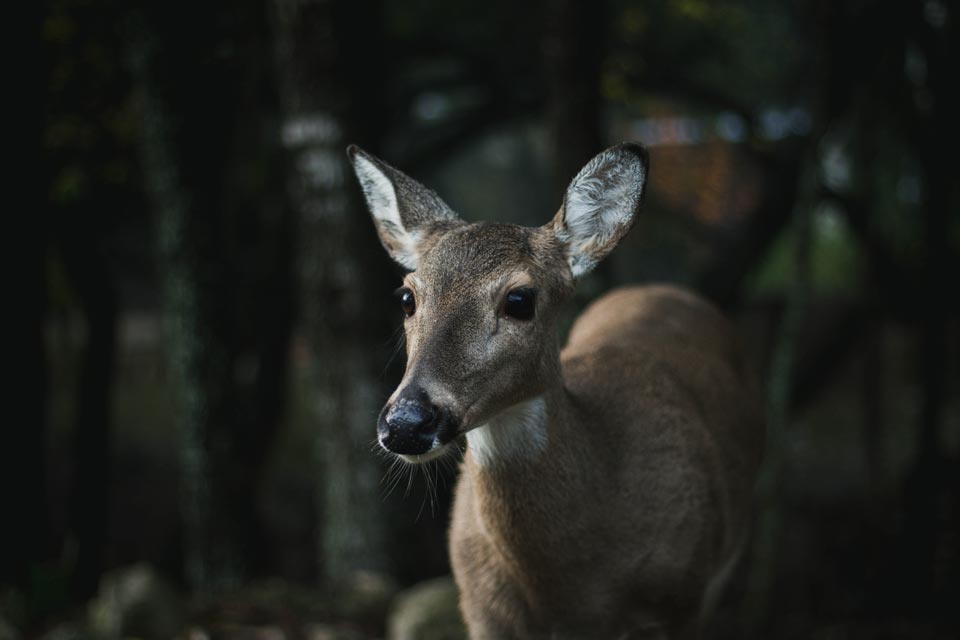Unless you have been living under a rock (or the moon), you are familiar with totality. On April 8, 2024, a total solar eclipse crossed North America. The path of totality started in Texas and stretched all the way to Maine. The northwest corner of Pennsylvania and the entirety of Lake Erie lay along this path.
I was in central Pennsylvania, a place known for its cloud cover. I got a glimpse of the eclipse about 15 minutes before the moon would have had its greatest coverage. Then it rained.
However, it did get quite gloomy. Many (but not all) of the birds stopped singing. It did not get quite dark enough to entice the frogs and toads to start trilling. If you are a long time reader of the blog, you might recall the eclipse in August 2017. Pennsylvania was not in the path of totality but 75-80% of the sun was blocked depending on your location in the state.
That year we decided to have a little fun to see if research deer noticed. We jacked the location fixes up to every 15 minutes. All in all, it was anticlimactic. Sure we had fun making our solar viewers but not much else happened and the deer certainly didn’t notice.
We decided to give it another go anyway. Totality was on our doorstep. Would deer bed down? Start moving like it was dusk? Would they simply ignore the celestial event of the decade in North America?!?
We sent a signal to all the collars to start collecting locations every 2 minutes from 2pm to 5pm on April 8th. Why? Mostly because we can! We have obtained locations every 15 minutes for the 2017 eclipse and 20 minutes during the rifle season, but never such intensive locations at other times.
Guess what happened this time. Nothing. As we expected, the eclipse didn’t seem to affect deer movements. No big surprise. An eclipse is more likely to affect other types of animal behavior (e.g., singing) rather than movements.
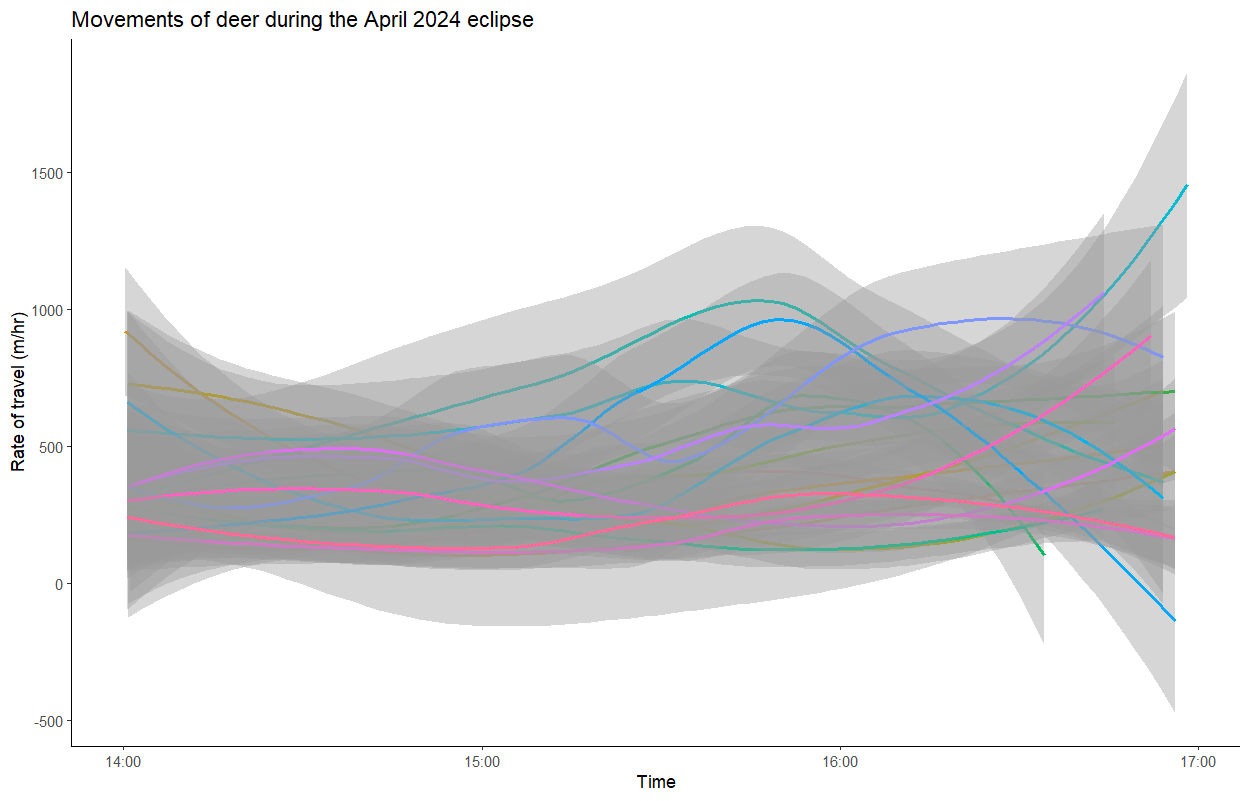
Other than watching a deer under your tree stand or from your car, have you ever followed a deer for 3 hours and plotted its location every 2 minutes? Neither had I.
The eclipse was in the middle of the day, so you wouldn’t expect them to move much. Here are some maps of their movements. The yellow dot in each map is the location of the deer at about the peak of totality.
Here’s a male meandering along the side hill near a creek.
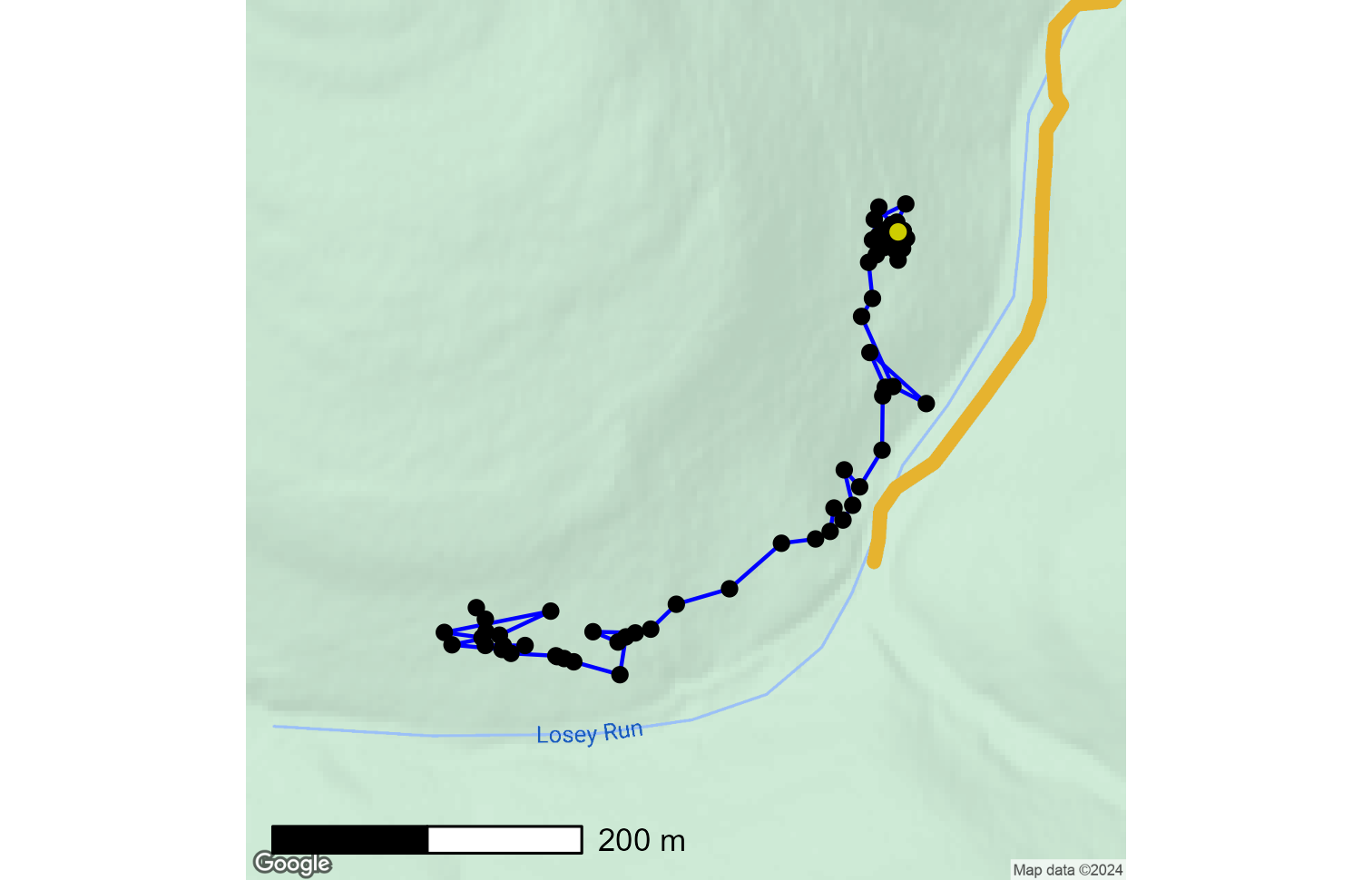
Here are 2 females that were traveling together!
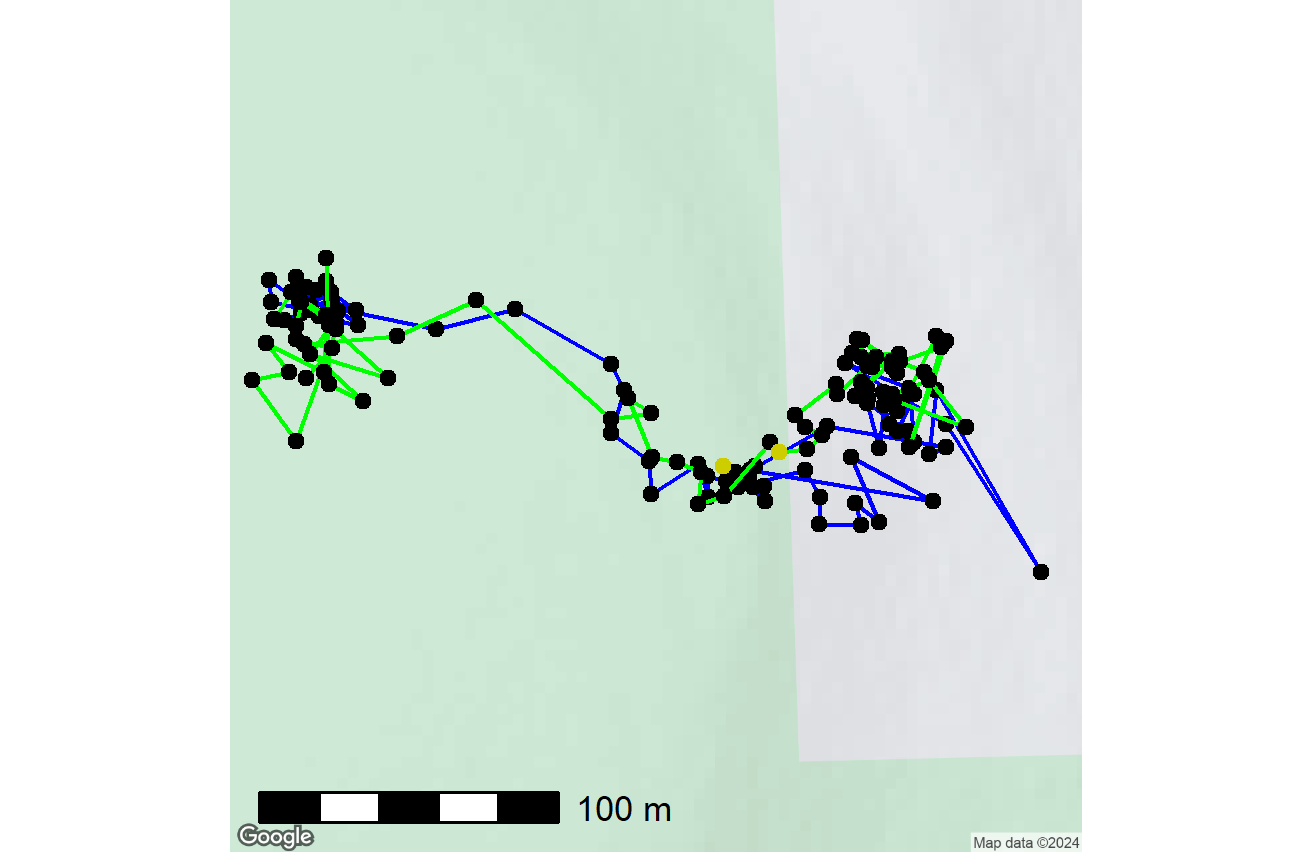
Another male
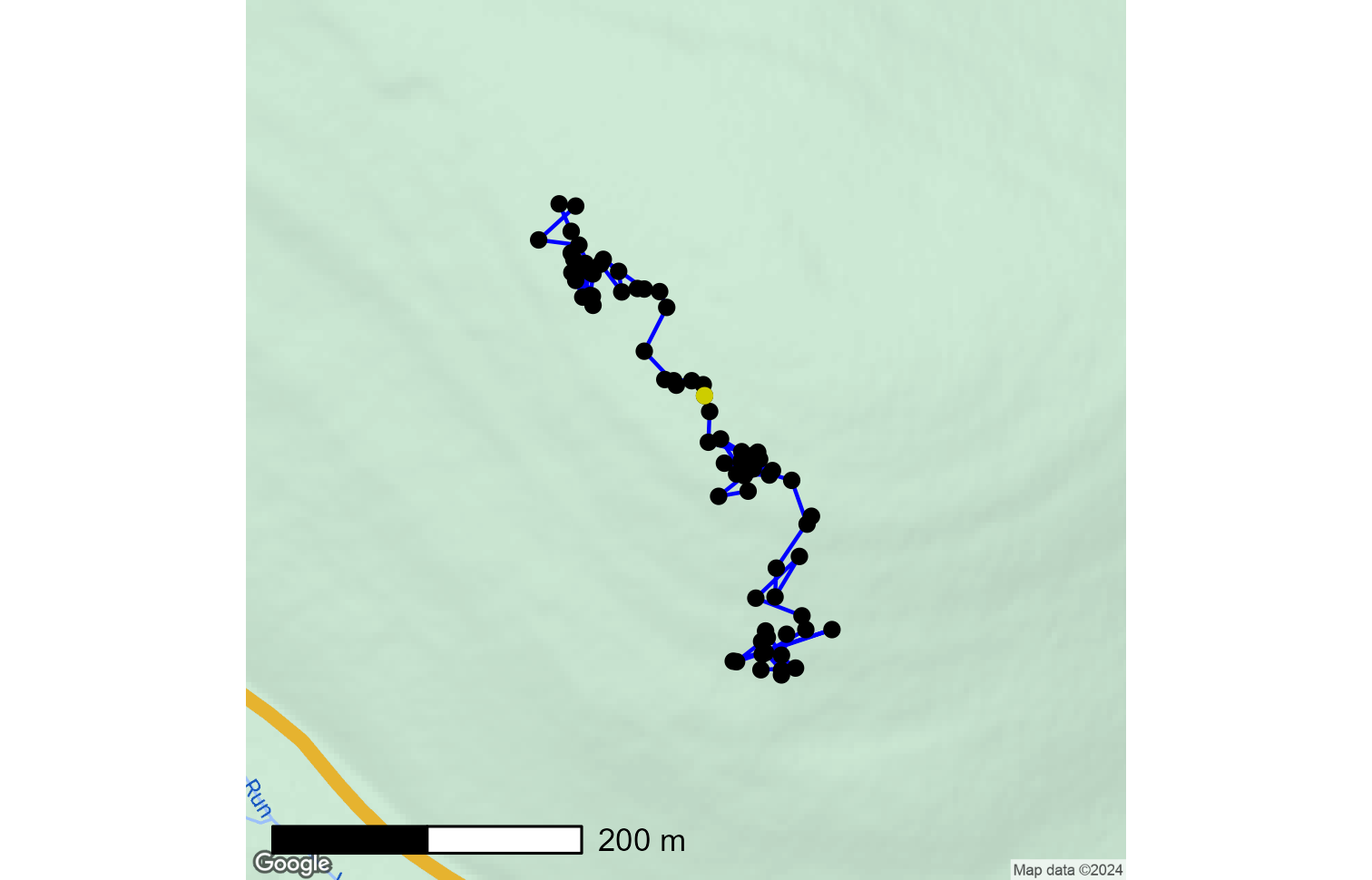
A few more females
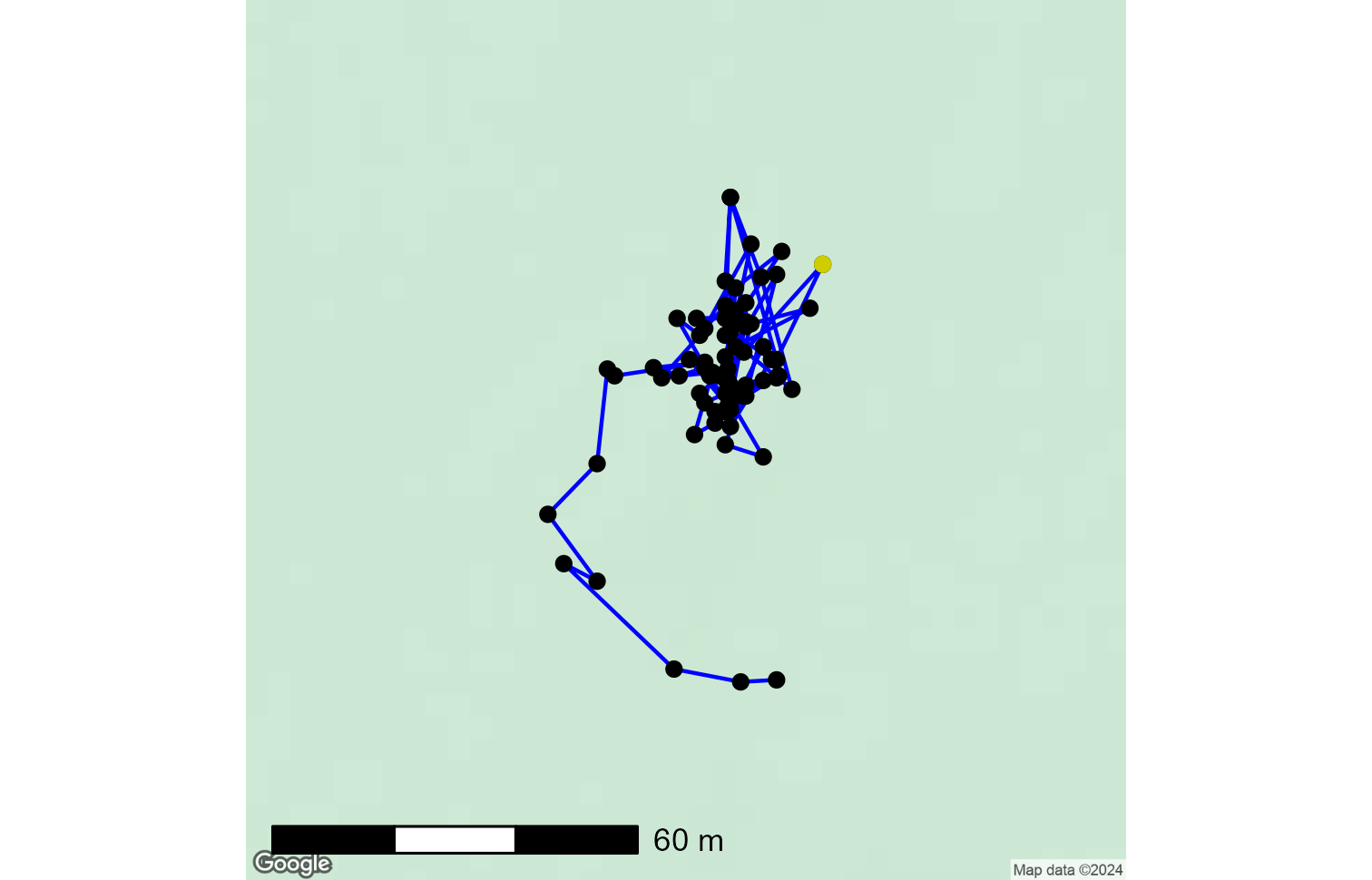
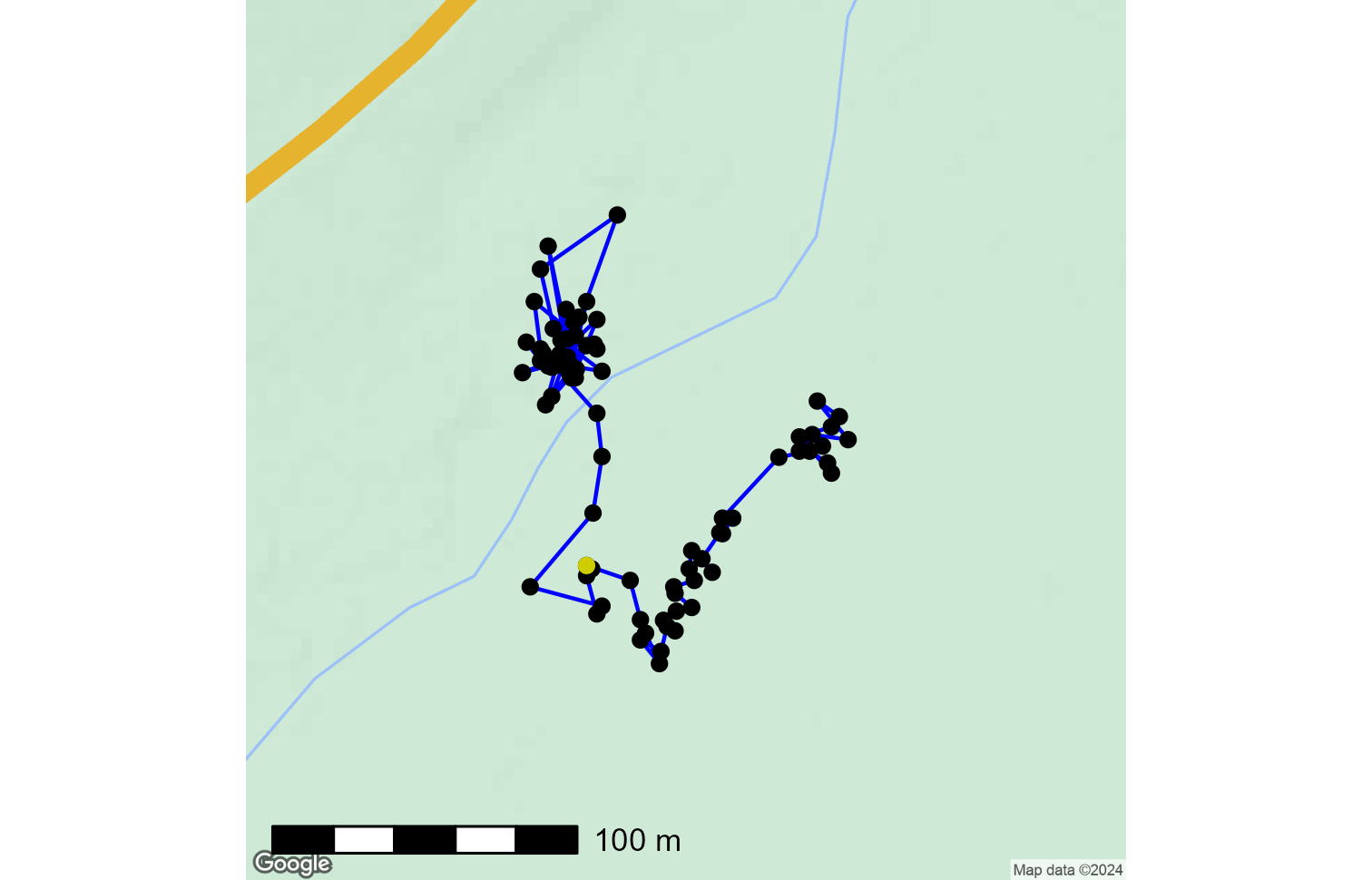
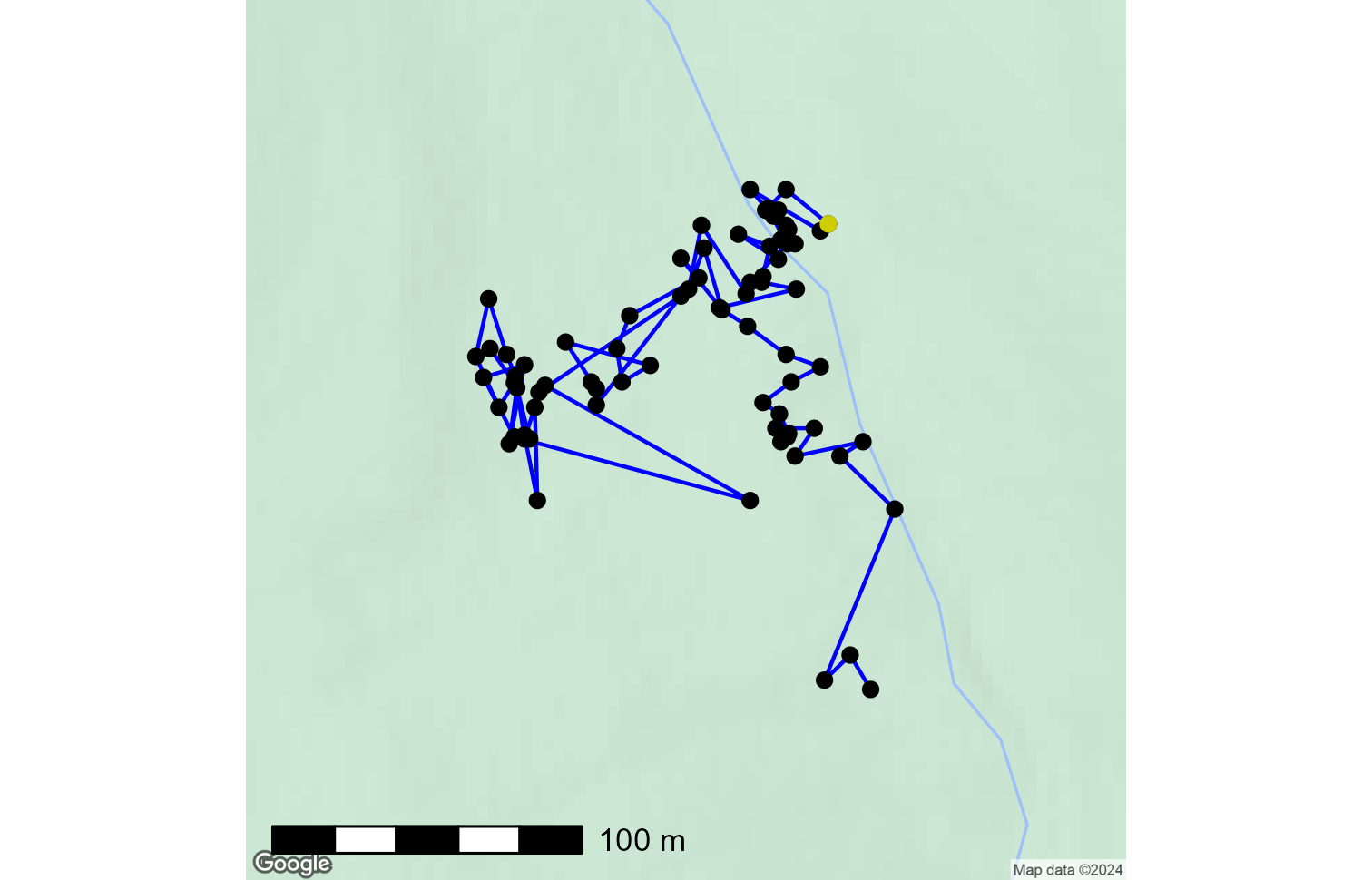
The accuracy of GPS units on our deer is usually with a few yards. How cool would it be to track a deer every 2 minutes for a year? Unfortunately, batteries aren’t that powerful (yet) but millions of cellphones are purchased annually and there is money to be made improving technology in batteries and electronics (but not that much from wildlife researchers).
Without the motivation provided by purchasers of millions of smart phones, we wouldn’t be able to map deer movements during an eclipse.
-Duane Diefenbach
